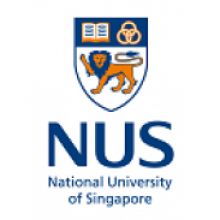A few weeks ago, three officials from a South Korean university visited my institution in Singapore. They said that they were worried about their curriculum. Their courses did not prepare students to quickly respond to a rapidly changing society and required urgent reform, they admitted.
There was, they said, an even more serious problem, one that threatened the university’s very existence: there are just not enough young people to fill South Korea’s university classrooms. Moreover, with supply outstripping demand, several universities could soon be forced to close.
This current situation is in part a consequence of the expansion of educational opportunities since the 1980s, particularly in the early 1990s in the transition from military rule to democratic government. Many new universities emerged in that decade, while existing institutions also expanded. But numbers are starting to fall and will plummet further from 2020 as a result of some of the world’s lowest birth rates; by 2060, the current population of 50 million will have dipped to between 34 million and 44 million, according to Statistics Korea. As such, student recruitment has become the most urgent task of universities.
The South Korean government has been sounding the alarm for years. In 2014, the Education Ministry forecast that the total number of university entrants would fall to 400,000 in 2023, down almost 30 per cent from 560,000 in 2018. In March, Cho Young-tae, a professor of health demographics at Seoul National University, predicted that 73 of the country’s 189 universities will no longer be needed by 2024.
Some universities have admittedly sought to recruit prospective students from China or central Asia, but they have sometimes struggled to offer compelling courses. This strategy is also far harder to achieve for those outside the industrial heartland of Seoul, which is 65 per cent of institutions.
Instead of simply blaming the current crisis on an unfortunate demographic dip, institutions should start to prepare for a future with fewer students. Every South Korean university president should sit down with senior staff and write their institution’s own CV and cover letter, evaluating themselves from the standpoint of an applicant. A university’s CV would allow it to objectively review its achievements and honestly assess where it could improve. The cover letter would give the institution an opportunity to revisit why it was established and, ultimately, what talent it wants to attract and nurture.
Each institution also needs to think about its unique selling point. Forget international rankings or brand, this is a question of “What can our university offer future customers?” That question is closely linked to another, starker, one: “Why do we exist?”
The college in Singapore where I work is a higher “vocational education” institution. Republic Polytechnic’s raison d'être since opening in 2002 has been to “nurture problem-solvers”. As such, problem-based learning informs its curricula in every department, from engineering to business and hospitality. This specialisation is our distinctive feature, setting us apart from four other polytechnic institutes in Singapore. It’s been very popular with students, even in a city extensively served by high-quality higher education provision.
Some South Korean universities have begun to introduce this type of learning as part of their own attempts to stand out from the crowd. It might not work for every university, however, and institutions must find other strengths to market. Our approach – or that taken by the new technology-led US school Minerva – may not find favour with all students. But if the goals and values of a university align with student and societal needs, that institution has a good chance of stepping back from the brink of extinction.
So, I have two questions for South Korean universities teetering on the precipice: why do you exist? And, what talent do you want to nurture in the future? Now is the time for answers.
Jayden Kim is a lecturer in human resource management at Republic Polytechnic, Singapore, and is also director of the Korean Association of Human Resource Development.
POSTSCRIPT:
Print headline: Demographic dip? Adapt or die
Register to continue
Why register?
- Registration is free and only takes a moment
- Once registered, you can read 3 articles a month
- Sign up for our newsletter
Subscribe
Or subscribe for unlimited access to:
- Unlimited access to news, views, insights & reviews
- Digital editions
- Digital access to THE’s university and college rankings analysis
Already registered or a current subscriber? Login










